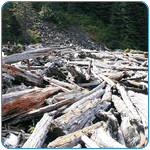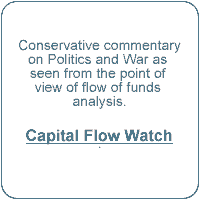 Brazilian Stock Market Bubble and Stalled Underwriting
Brazilian Stock Market Bubble and Stalled Underwriting
Case Study: The Brazilian Stock Market
Underwriting and the Brazilian Stock Market Bubble
Anxious Issuers
Not only did the government offer incentives to stock investors, but the authorities were just as generous with issuers.
The 'Economic Miracle' created demand for new capital to expand industry and commerce.
Companies that went public had tax advantages and priority at state financing and licensing agencies.
These were peak years of the 'Economic Miracle' and Brazilian industry was avidly seeking capital for expansion. The higher the price of equities, the lower the cost of capital.
When price earnings ratios reached thirty in an economy with ten percent real growth and interest rates of over thirty percent, the urge to sell shares to the public became irresistible.
Open-end Fund Investors, Margin Traders, and Manipulators
Rapidly rising prices were driven by money flowing into Decree Law 157 Funds, while new issues waiting for approval by the regulator were backing up.
Good 'performance' due to price increases persuaded the public to invest in open-end mutual funds that now advertised unusually high returns.
Since the Brazilian stock market had been inactive for years, most investors were naive and unfamiliar with the risks of the market.
Rapidly rising prices attracted speculators and naive investors
Speculators and gamblers found it easy to arrange margin financing. Some people even mortgaged their homes to buy stocks.
Slick operators and market manipulators descended upon the exchange, architecting pump-and-dump schemes to fleece an eager public.
Since the exchange authorities were also brokers, often themselves involved in manipulation, nothing was done to hinder unhealthy activity.
Furthermore, the Rio de Janeiro Stock Exchange, not having implemented the Modernization Plan of 1965, lacked the operational structure to safely handle the rapidly increasing volume.
Uncontrolled securities credit, market manipulation, and rampant speculation pushed prices ever higher.
The Causes Were Not Hidden
The securities regulator announced the volume of issues awaiting registration and the tax authorities reported the scheduled flows into 157 funds.
Consequently, an observer who knew where to look could see both scheduled demand (from the 157 funds) and scheduled supply (from the issuer backlog).
Because prices had reached extreme levels, issuers had strong incentives to go public.
With average price-earnings ratios of thirty in a market in which five-year government bonds were paying over 8% in real terms, and in a market in which the demand for capital to finance industrialization was insatiable, well-established companies had an extraordinary interest in selling new issues to the public.
An over-supply of underwritings awaiting government approval developed.
It should have been obvious that the log jam would break when the regulator started to approve new issues and a flood of equities would then drive down prices.
 Delay in registering new issues created a log jam that would break and drive down stock prices for years
Delay in registering new issues created a log jam that would break and drive down stock prices for years Instead, tax incentives and and a pent-up supply of new issues pushed prices higher and higher.
For an analyst aware of these facts, it should have been clear that once the authorities finished the rules on stock registration, the log jam would break.
When this happened, scheduled investments from Decree-Law 157 Funds could no longer support the market.
There would be an excess of offerings from issuers and the bubble would collapse.
With prices falling, mutual funds would go into net redemption (as they had in the past), and margin traders would be forced to sell to cover their borrowings.
This would drive prices further downwards.
Because of the extremely simple nature of the cash flows, there should have been no mystery.
However, only a few informed analysts understood what was going on.
In those days, the most advanced professionals in the Brazilian market were still trying to digest Graham and Dodd's 'Security Analysis' and Edwards and Magee's 'Technical Analysis of Stock Trends'.
Flow of funds analysis was simply not on the agenda.
Mid 1971: The Bubble Pops
By May 1971, the securities regulator had begun to approve new issues and the dam broke.
By July, panic set in and open-end mutual funds were in net redemption. A heavy volume of trades swamped the Rio de Janeiro Exchange back offices which had failed to modernize.
Net redemptions of mutual funds, margin calls by brokers and banks, and continued new issues, all helped to collapse prices.
 The São Paulo Stock Exchange was also swept up in the bubble of 1971
The São Paulo Stock Exchange was also swept up in the bubble of 1971Minister of Finance Delphin Netto, an orthodox economist more comfortable with bankers and politicians than with securities dealers, went on television to lecture the public on the evils of speculation.
In the latter half of 1971, Rio stockbrokers made a joint statement in the press, with much fanfare, declaring that the 'market was fundamentally sound'.
This attempt to jaw bone the market not only failed utterly, but contributed to a longer term loss of confidence in stockbrokers.
- Stock prices dropped steadily, falling 20% by the end of the 1971.
- By December 1972, prices had fallen a further 48%; speculators on margin were wiped out.
Because of the underlying flow of funds, overlooked by most people at the time, the Great Leviathan had shifted beneath the feet of the speculators.

